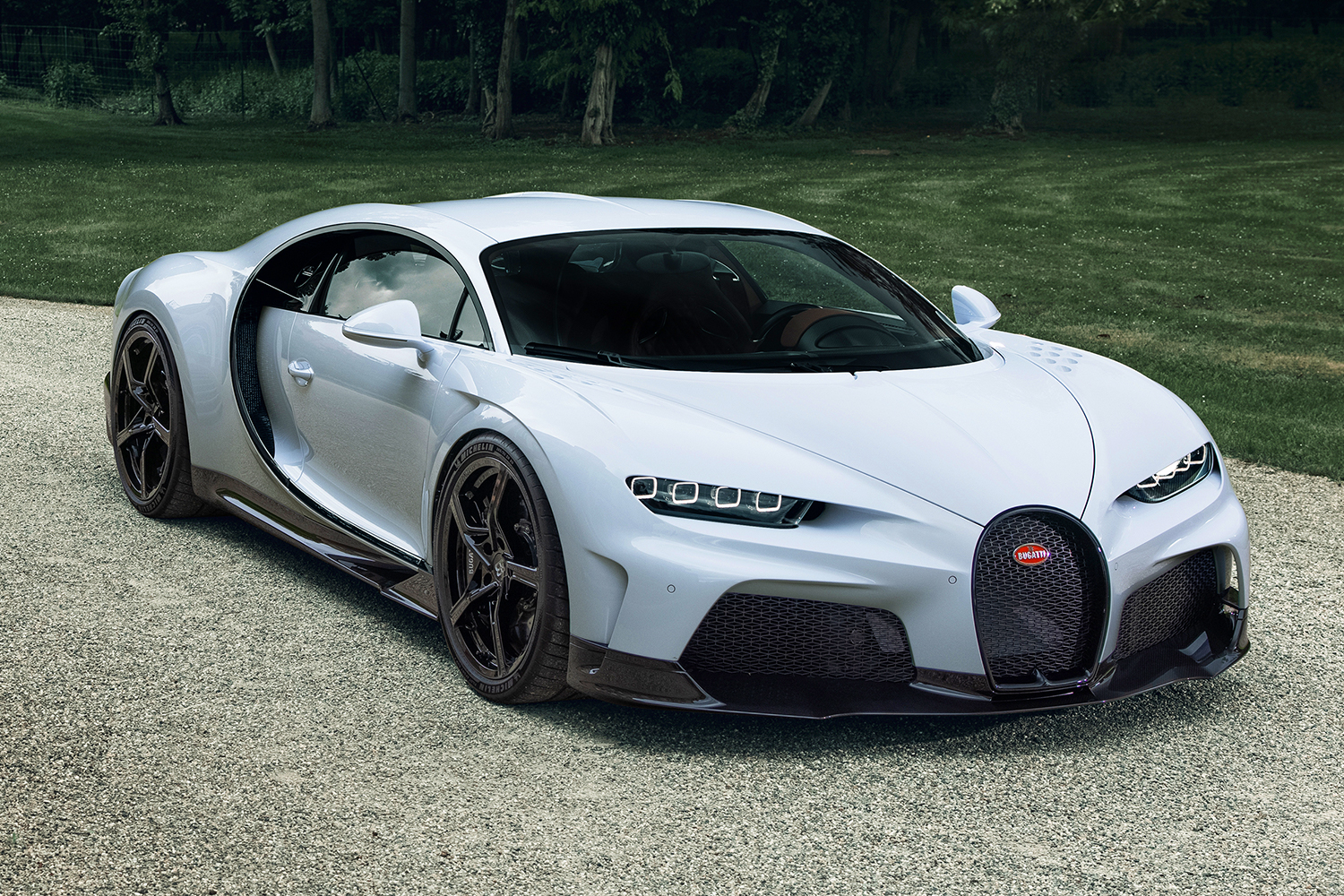The 16-cylinder engine that Bugatti has been using since 2005 is a marvel of modern engineering. When the 8.0-liter, turbocharged W16 was first plopped into the Veyron 16.4, automotive magazines had a field day attempting to describe it; Car and Driver went with “as much engine output as two Corvette Z06 V-8s” that “throws off more heat than a dozen pizza ovens.” With a powerhouse like that, you can forgive the automaker for trying with all its might to keep it alive.
That’s exactly what Bugatti is doing with the new Chiron Super Sport, a hypercar that will become the fourth model in the French marque’s official Chiron family. Unveiled on Tuesday, “the ultimate grand tourer,” as it’s being billed, can produce a stupendous 1,600 horsepower and hit a top speed of 273 mph (it could do more, were it not for an electronic speed limiter). When deliveries begin in early 2022 it will go for around $3.9 million. And while seemingly every other automaker in the supercar niche is changing with the times, squeezing out more power with the help of electrification, Bugatti is still relying largely on their gas-guzzling W16 for both performance and prestige.
As such, Bugatti calls the new iteration of the W16 “thoroughly overhauled.” Originally developed by the Volkswagen Group, Bugatti’s parent company since the German multinational company acquired the French brand in 1998, the gargantuan engine has been tweaked over the years to suit specific needs, like the Chiron Super Sport 300+, which was made to break the production car speed record. With the new Super Sport, as the limiter makes clear, speed wasn’t the main goal (Bugatti even bowed out of speed contests after the 300+); instead, this new model focuses on delivering “a comfortable, quiet, and balanced drive,” according to Michael Kodra, head of drive development at Bugatti.
“In comparison to the Chiron Pur Sport, which, as a free-revving vehicle with transverse dynamics offers a great deal of downforce up to [217 mph], the Chiron Super Sport remains very neutral and quiet even above this in the uppermost speed ranges,” said Jachin Schwalbe, head of chassis development. “This vastly increases the feeling of safety.”
It’s an undeniably exciting prospect for those who can afford it. But will billionaires still flock to the old-school promise of cylinders and turbochargers?
While there have been rumors of Bugatti going electric, potentially in a partnership with Croation EV maker Rimac, a spokesperson declined to confirm any plans to Bloomberg. Meanwhile, their competitors are going all in.
Over at McLaren, the Brits recently unveiled the plug-in hybrid Artura, their first brand new car in a decade, which has an electronically limited top speed of 205 mph. Lamborghini meanwhile has been building its most powerful cars thanks to battery-aided powertrains for a couple years now. The Koenigsegg Gemera, which features three electric motors, promises to beat the Super Sport with its 1,700 horsepower. Then there’s relative newcomer Rimac, which just announced the $2.4 million all-electric Nevera that hopes to topple all of these.
Yet, hoping is not the same as delivering. And that spokesperson that talked to Bloomberg told the outlet that “Bugatti is focused on the 16-cylinder engine” and declined to say whether the Super Sport will be the last in the Chiron line.
In 2018, Bugatti President Stephan Winkelmann said, “There will be no new 16-cylinder, this [engine] will be the last of its kind.” Three years later, it’s still chugging along just fine.
This article was featured in the InsideHook newsletter. Sign up now.
